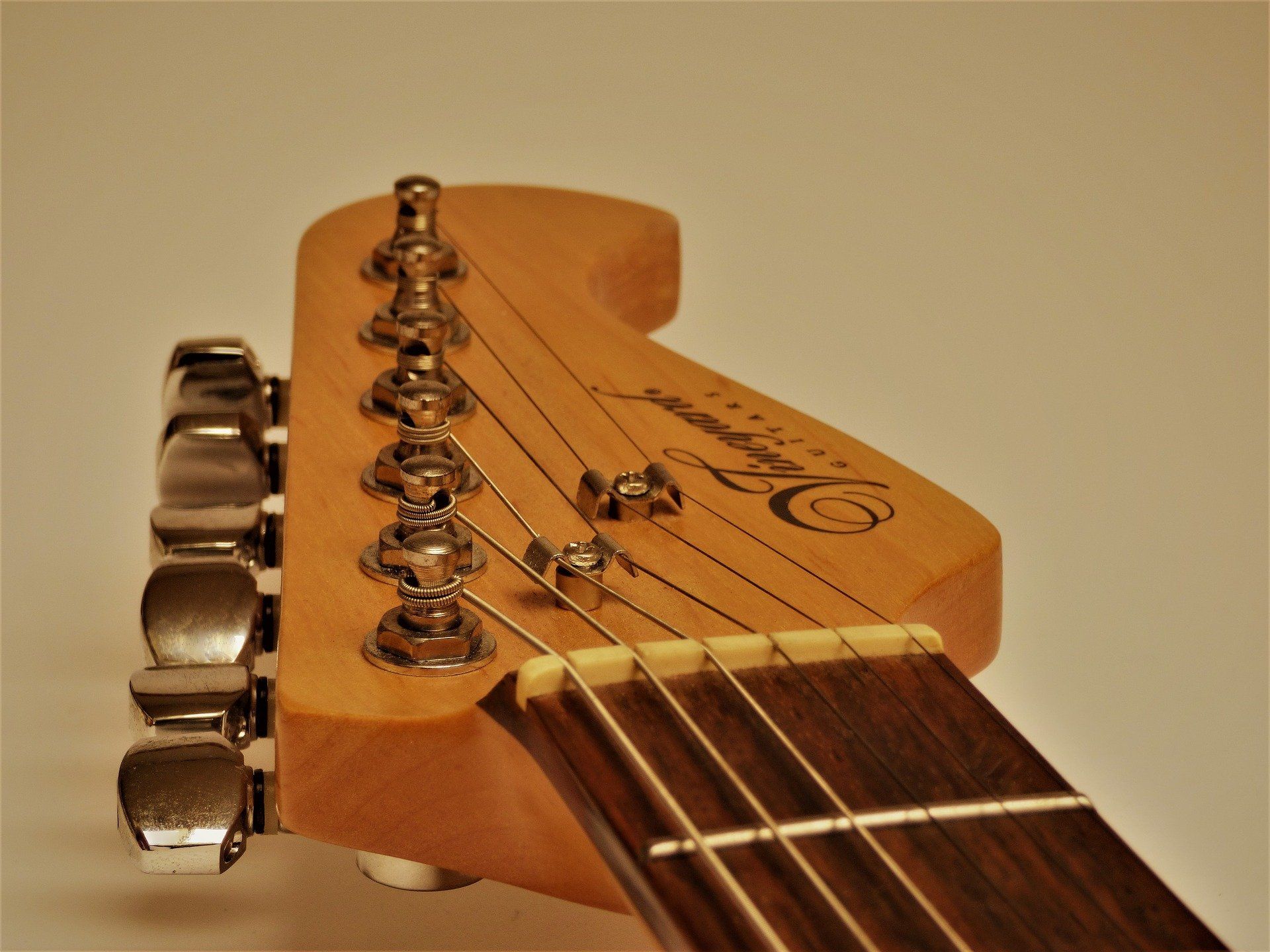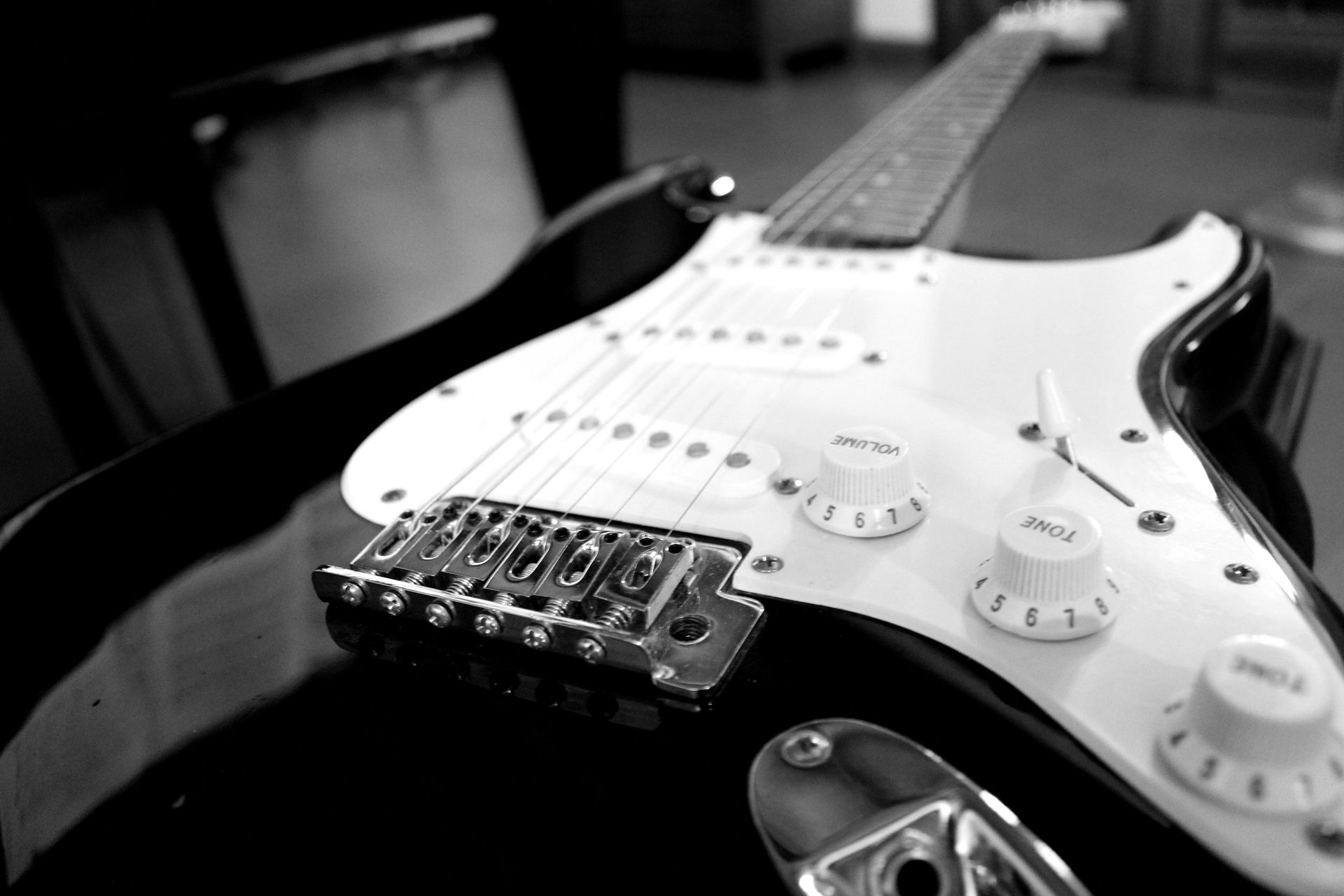
How to Make Your Own Signature Guitar For £100 or $125
- by Tom Boddison
- •
- 28 Mar, 2017
Everyone wants their own signature guitar...

Most people assume that it would cost hundreds (if not over £1000/$1250) to make your very own unique guitar or have it made for you. Wouldn’t it be great to have your own unique guitar that is a one-of-a-kind for less than £100/$125?
Could we theoretically make a signature Stratocaster for less than $125/£100 that played well, sounded good, and was easy to put together?
(Note: at the end of the article I’ll be showing you how you could spend a little more cash and some extra time to make something that’s really special!)
All prices are correct at time of writing
Your Signature Model
There were a number of reasons for the fact I chose a Stratocaster for this theoretical experiment.
The first was price – cheap Stratocaster copies are everywhere, and it’s very easy to find ones that can be easily modified to suit your needs.
Just look at this page on eBay for example – there are loads of models from a variety of manufacturers and all for around £50 (which is around $60-$65 – there should be similar examples on the US eBay site). This means you have more money left over to spend on other parts – just pick a guitar with a colour scheme that you like.
Don’t worry about the colour of the scratch plate or hardware; just look at the body because all of the other elements are easy to change if you like (you’ll find out how in a moment).
The second reason I chose the Stratocaster was because of its easy customisability. The Stratocaster was designed to be quick and easy to manufacture, meaning all of its parts easily screw together.
The modular design allows anyone with even basic knowledge of guitars to customise their instrument and swap out parts for ones they prefer. This means that there are an unbelievable amount of spare Stratocaster parts for sale on a variety of sites, giving you complete control over the look and feel of your guitar.

STEP 1 – The Guitar
When looking for the guitar to use as the base of your build, don’t be too concerned about the quality of the guitar.
We’re going to be swapping out almost all of the guitar’s parts, so it’s really only the body and the neck that we’re interested in. Of course, body wood and neck material do have an effect on tone but when we’re aiming to do the whole build for £100, we can’t afford to be picky!
Most of the guitars you’ll find around the £50 price mark will be second hand models made of basswood, which will be fine for our purposes. Make sure the guitar is in at least OK condition, and don’t be afraid to negotiate on price and see if you can get a better deal. After all, the less you spend on the guitar, the more you can spend on cool parts to upgrade it with.
STEP 2 - Taking It Apart
The next step once you’ve got your guitar is to take off the strings, scratch-plate, bridge, strap pins, output jack and tuners (note: you’ll have to cut some wires to take the output jack and scratch-plate off, but don’t worry – we’ll be replacing these parts anyway).
Get the guitar down to just the body and the neck, so that you can see what you’ve got to build up from. Then, give the guitar a good clean to get rid of any grime and make it look good ready for the next step.
STEP 3 - Extra Parts
The next step is to decide on your extra parts. This is entirely up to you – there are so many options available that you can really create something unique!
Amazon UK offer a host of Stratocaster parts at very reasonable prices. I can't vouch for the quality because I haven't tried them, but as a thought experiment it's very interesting to see what is possible. For my imaginary build, let’s say I bought a blue Stratocaster copy with a maple neck from eBay for £50. Next, I’d want to take it all apart and then start to build it back up again – with a new scratch plate, pickups, control knobs and hardware.
I could purchase a nice gold bridge here from amazon for less than £7, then buy tuners and the rest of the hardware for it for less than £25 – a bargain! That totals £75, so that leaves us with £25 left to spend on a new scratch plate and possibly some new pickups.
This is where you start to realise how many options really are available – from bright pink, to black, to tortoiseshell, there are literally hundreds of different options. I found this set consisting of a gold mirror pick-guard, some gold pickup covers and other gold parts (to match the rest of my hardware) for just £7.49 – crazy!
That would leave me with around £18.50 to buy some extra parts with, so I could decide to go for some pickups. That’s when I found these – for £12 I could get some brand new pickups that should sound decent. Then, it’s just a matter of carefully taking the covers off the pickups (make sure not to touch the string windings – they are very delicate!) and replacing them with the new ones included in the previous set. Make sure to carefully check the size of any pickups you buy to ensure they fit your guitar and scratch-plate.
So then, if we'd bought all this, we'd still have £5.50 left – what to spend it on? Well, we could spend it on some spray paint and some tape to make an Eddie-Van-Halen style pattern on the body, or we could invest it into some new control knobs.
We could go even more over-the-top with the gold and get these control knobs for just £6.45. That gives us our unique guitar for around £101 – and none of the building or replacing of parts is very difficult. All you need is some basic knowledge of guitars, a wiring diagram (many can be found on the internet for free – just search for “Stratocaster wiring diagram” plus the pickup configuration you’ve opted for, such as HSS or SSS), and a few basic tools.
Our Guitar
So then, what could I have spent my money on?
£50 – Second-hand blue Stratocaster copy
£25 – Gold hardware, including bridge, screws, tuners, strap pins and output jack
£7.49 – Gold mirrored scratch plate and gold pickup covers (the set also included some new control knobs, but I opted to buy some different ones that I preferred)
£12 – New Pickups with a nice vintage tone.
£6.45 – New control knobs
TOTAL: £100.94
For that total I could have built myself an entirely unique guitar with a striking (some would say ugly, but hey, it's my signature guitar, not theirs) blue and gold colour scheme, decent tone, mirrored pick guard, gold tuners and a maple neck. Then it’s simply a matter of setting up the guitar to make it play well and rocking out!
I was pleasantly surprised at how cheap this could really be – having a cool, unique guitar for around £100 is very appealing. No, it won’t be the best guitar in the world (or anything close to it) but it would be a lot of fun and could turn out much better than expected. I would guess that a guitar of the quality we’d build this at would come to around £200-£250 if bought new – which at modern standards would result in a decent, playable instrument. I may decide to go ahead with this in the future; if I do, I'll do a post about it to tell you how it turns out!
You need a basic knowledge of guitars to make this work, but thanks to the modular design of the Stratocaster it should be possible for anyone to have a go at making their own signature guitar.
Upgrades - and How to Make Something Special
So, what if you’re got a bit more cash to spend and you want to build something a little more exciting? If you’re looking for good tone, the main area you’ll want to spend your money on is pickups.
Pickups contribute massively to the sound of a guitar, and upgrading them is the surest way to make your DIY Stratocaster sound better. You could go for some classic Fender single coils for a great vintage-blues tone, or you could opt for something heavier like the “hot rails” pickups offered by Seymour Duncan. If you want to go for a really professional sound, expect to spend upwards of £30 for each pickup. This doesn't mean you can't get great pickups for less, though; be sure to shop around, because some of the cheaper models might surprise you!
You could also try installing some built-in effects. Matt Bellamy of Muse does this, and it’s a great way to add a bit of fun to the build - even if it’s just a simple boost switch for solos. Of course, you could go crazy and add effects like delay, reverb or even fuzz to your guitar for instant tonal variety when you need it. You’ll have to find space within the body cavity for the battery (which can sometimes be an issue), but it’s a great way to improve your guitar and make it more unique.
Another final option is to buy a good quality body and neck individually, and then put them together yourself. This is more expensive than buying a cheaper Stratocaster copy but the wood quality will be far better and the finished guitar will be improved. It’ll still be cheaper than buying a complete guitar new, as well – and you can produce an entirely unique, exactly-to-your-spec guitar!
So there you have it – try building your own signature guitar! If you’ve got any feedback or comments don’t hesitate to contact me or leave a comment!